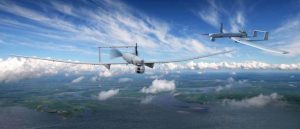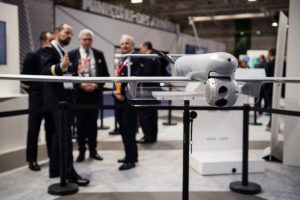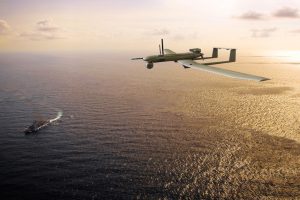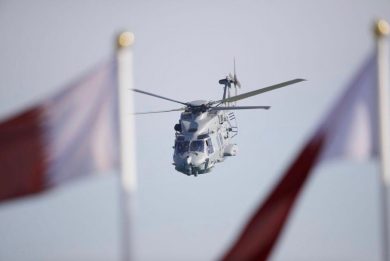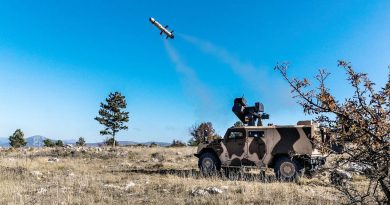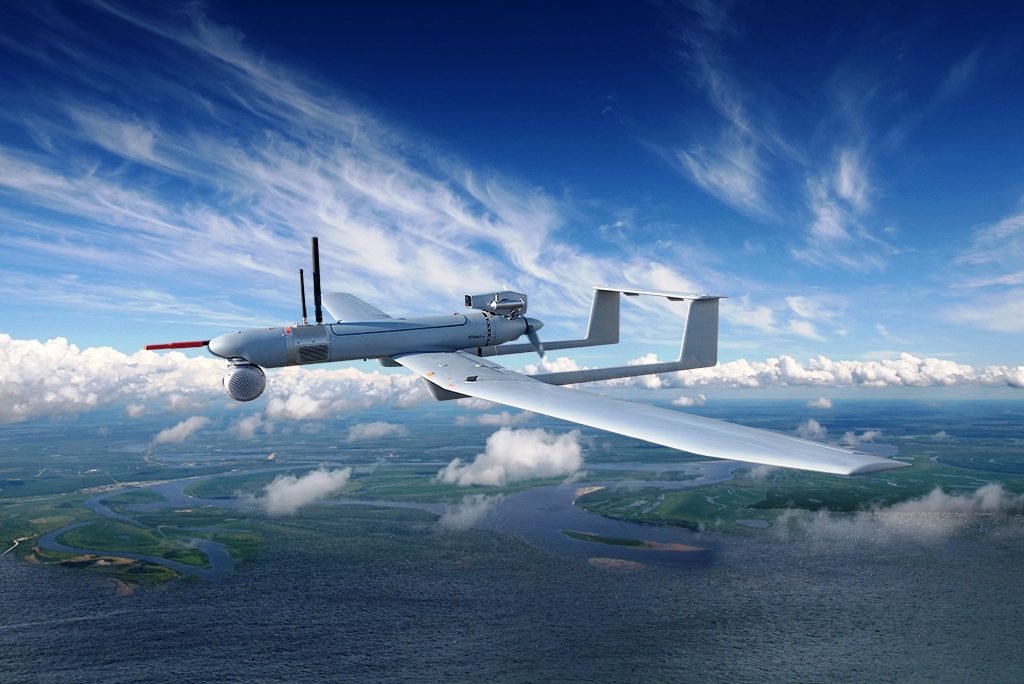
Survey Copter’s expands its Aliaca UAV family
During the Euronaval 2022 exhibition, Survey Copter, a subsidiary of Airbus, presented to the public for the first time, the new family of Aliaca light tactical UAVs.
Being the fruit of more than 10 years of development by the Survey Copter engineering team, who took into consideration the requirements and constraints of naval operations around the world, the Aliaca Evo is the new naval fixed-wing mini-UAV system chosen by the French Navy and the Direction Générale de l’Armement (DGA), the French defence procurement agency, for the Système de Mini Drones aériens embarqués de la Marine (SMDM) programme, to enhance shipborne aerial surveillance, detection and identification capabilities. Following the selection of the Aliaca Evo, in the last quarter of 2020 Survey Copter signed a € 19.7 contract with the DGA for the supply of 11 systems, each consisting of two Aliaca air vehicles, one ground control station and one data link, associated training and maintenance in operational conditions.
The Aliaca Evo is a fixed-wing, electrically-powered, air vehicle able of carrying out up to 3-hour missions within a 50 km range from the launching platform. With a low-acoustic signature and launched by a catapult, the Aliaca Evo ends its flight with an automatic net recovery deployable on ships with or without helicopter platforms. With a maximum take-off weight of 16 kg and a maximum payload of 1,5 kg, a wingspan and length of respectively 3.6 and 2.2 meters, it is propelled by a silent electric motor. Perfectly suited for maritime missions thanks to its high-performance GX5 gyrostabilized electro-optical/infrared (EO/IR) payload developed and manufactured by Survey Copter, and an Automated Identification System (AIS), the air vehicle collects information in real time and transmits them via an encrypted data transmission system. The flight plan is carried out automatically by the airframe and can be modified at any time by the operator during the flight. Survey Copter integrates its own flight computers in its UAV systems, implementing the most advanced algorithms developed by its Swiss subsidiary weControl AG.
The drone has a gliding capability, which gives it total discretion when flying over a target of interest. Once the mission is completed, it lands in a removable net installed on the rear flight deck were available or on an open area deck of the vessel. The fully automated net landing system not only frees the operators from the constraints of a traditional landing, but also reduce wear and tear on the materials. Taking into account the limited space available on board, especially on patrol platforms, the Aliaca Evo has a reduced logistical footprint; the air vehicle is carried in transporting boxes and assembled, while the system is deployed in around 15 minutes by two crew members who receive a two-week dedicated training before embarking the system and who also control it during the mission. The system can operate up to Sea State 3 and with winds up to 50 km/h.
The Aliaca Evo UAS has been certified and qualified in July 2022 by the French DGA for operational use. Five complete systems have already been delivered to the French Navy and the Aliaca Evo is already operational on board the French Navy’s Patrouillers de haute mer (PHM, High Seas Patrol Vessels), to be followed by the new patrouilleurs d’outre-mer (Overseas Patrol Vessels) and the Frégates de surveillance (Surveillance Frigate, FS), their use on board other platforms, namely the amphibious Bâtiment de Projection et de Commandement (projection and command vessel, BPC), being currenty under study.
Based on the evaluation and qualification activities carried out on the Aliaca Evo, just ahead of Euronaval 2022 the manufacturer announced the development of Aliaca ER (Extended Range), which is expected to complete qualifications activities soon. The new variant shares the same basic aerodynamic configuration of its progenitor but it replaces the electric propulsion of the Evo model with a new thermal engine using AV-1 jet fuel. This allows to increase the speed, push the maximum range out to 100 km and extend the UAS endurance to six hours. A more powerful datalink is introduced to enable communications at the extended range, requiring a longer antenna. Both air vehicles, according to manufacturer, can carry alternative payloads if required.
Photos and images courtesy Survey Copter/Airbus

